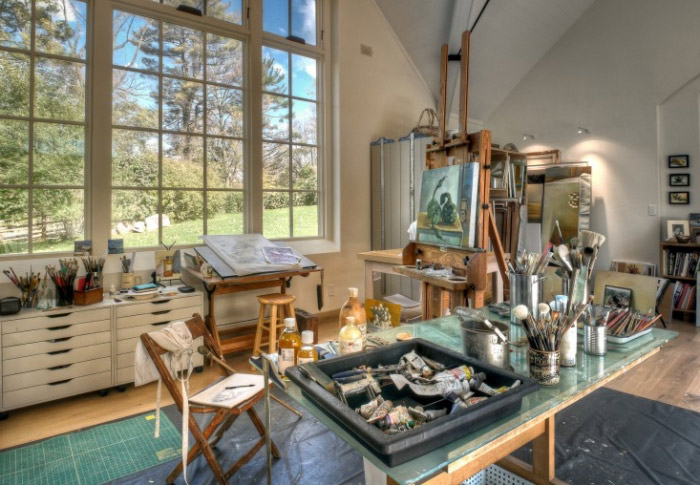Question from Daniel, Drawing Academy student
Hi, could you give me some advice how to set up my work-space properly?
Right now I feel very limited because my room is quite small and I draw on my computer table with my computer screen in front and it feels quite uncomfortable. I don’t have a drawing board yet either, however I will get one.
And because of this, drawing from life becomes hard for me as I don’t have space to set things up properly. I have to look at pictures on my screen if I want to draw something. Is it OK to take pictures of things I want to draw and upload them to my computer, or do I simply have to get a bigger room? I assume I need a bit of distance between me and the object I want to draw right? And that is not possible for me right now.
Thanks.
Daniel
Drawing Academy Tutors
Hi Daniel,
Thank you for your question about work-space for drawing.
In the Drawing Academy, we advocate drawing from life, memory and imagination.
However, we do not advise simply copying from photos or computer screen.
You may find out more about why not to draw from photos in this video:
//drawingacademy.com/why-drawing-photos-is-treacherous
To benefit from the Drawing Academy course, you can watch video lessons one by one to get the knowledge about such fundamental principles of drawing as constructive drawing, linear and aerial perspective, golden proportions, human body anatomy and proportions, rules of composition, etc.
Then, you need to apply that knowledge in your own creative projects.
Regarding setting up an art studio space, you may consider the following:
- The room has to have windows facing North. This way, no bright sunshine will interrupt your workflow.
- It has to be a separate room. Do not combine it with your bedroom, office or kitchen.
- Paint wall matte-white; they will reflect natural light and brighten the room.
- Arrange an easel or drawing board with the window to your left, so your right hand would not cast shadows on artworks.
- If you draw/paint models in your studio, it will be ideal to have at least two windows – one for you and another to lighten a model.
- Tall windows with variable shutters/curtains will give you a better way to control light coming through.
- For working outside of daylight hours, use full-spectrum natural light bulbs.
- It is not a place for eating or smoking.
- Keep it well ventilated.
- Keep your studio uncluttered; this is especially important for small spaces.
- It is a good idea to use storing cabinets for materials and paper shelves/racks for artworks and papers.

When it comes to drawing from real life, a bigger studio will help, however you have unlimited opportunities outside your room.
Just take your drawing board and pencils outside, make multiple sketches in your sketchbooks, visit museums and draw whatever you see or imagine.
You don’t have to be glued to the computer screen.
We hope this helps.
![]() Kind regards,
Kind regards,
Natalie Richy and Vladimir London
Drawing Academy tutors





